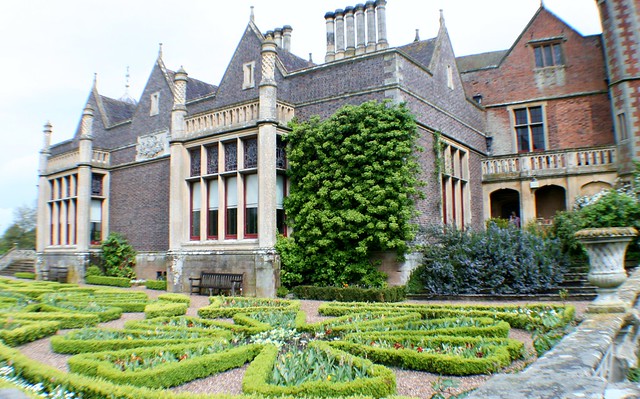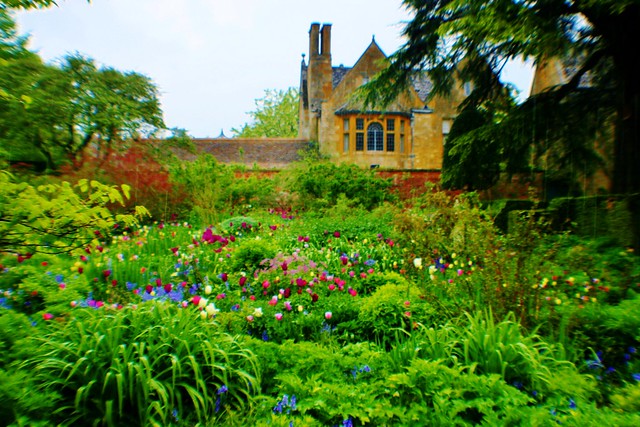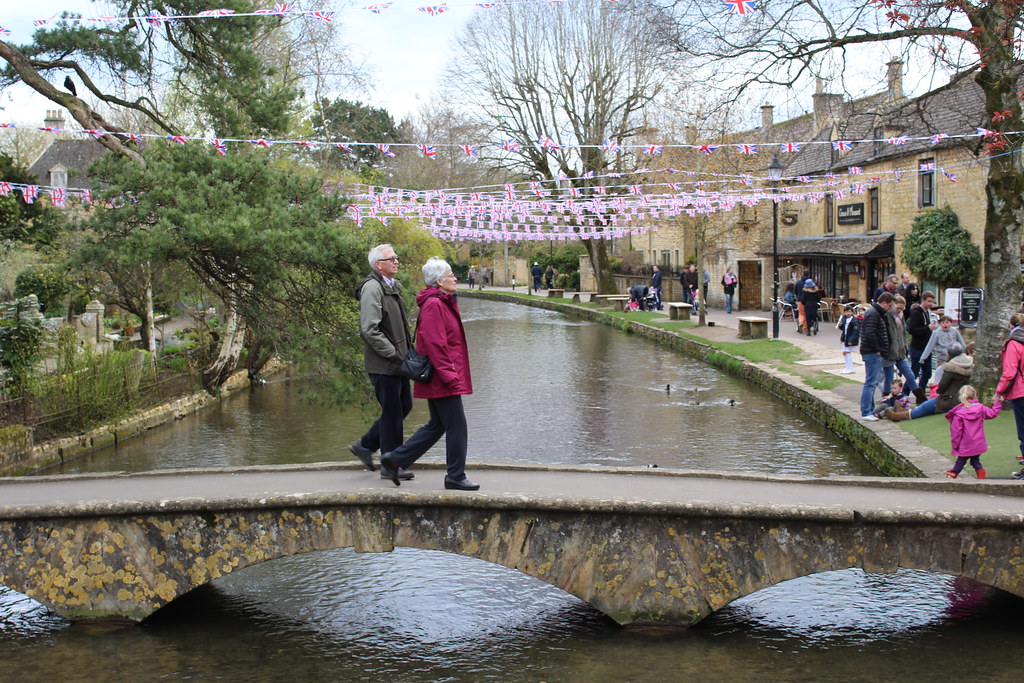English Cotswolds
Welcome to the Cotswolds, a very popular area within easy reach of London. Here can be found classic English villages, castles, palaces, gardens, dreaming spires of Oxford, Shakespeare Country, connections with the Roman period and much more.

Charlecote House
Planning a tour of the Cotswolds
To assist visiitors with itinerary planning a listing of key visitor sites and background information is provided below.
The Cotswold Hills dominate the English counties of Gloucestershire and Oxfordshire in what may be called ‘middle England’.The name ‘Cotswolds’ could be derived from ‘Cod’s Wold’, after an early Anglo-Saxon farmer. The Cotswolds comprise a limestone dominated belt of upland which separate South East England from the English Midlands. This wealthy landscape has been occupied by man for thousands of years the legacy of which is manifested in Long Barrows, Stone Circles, Roman Villas, richly endowed ‘Wool Churches’, mansions, quaint cottages and stone-walled fields. The visual appeal of the area is greatly enhanced by the widespread use of locally sourced building stone, a yellow oolitic limestone dating back some 150m years to the Jurassic period. This building stone was extensively used in construction of the nearby Oxford Colleges.The growing of sheep’s wool in medieval times generated the wealth which financed the beautiful churches and private houses which can still be admired today.

Hidcote Manor Garden
Here is a listing of specific sites:-
Prehistory: The late Neolithic era Rollright Stones (stone circle) near Long Compton.
Roman Era: Cirencester with its Roman Ampitheatre plus Roman villas at Chedworth, North Leigh and Lechlade
Medieval Barns: Church Enstone (1382) and Swalcliffe (1409)
Castles: Berkeley, Sudeley, Broughton.
Heritage Properties: Charlecote Park, Chastleton House, Snowshill Manor.
Cotswold Gardens: Hidcote Manor, Sudeley Castle, Malmsbury Abbey, Sulgrave, Painswick Rococo Garden.
Towns & Villages: Bibury, Bourton-on-the-Hill, Bourton-on-the-Water, Broadway, Burford, Castle Combe, Chipping Campden, Chipping Norton, Ebrington, Fairford, Lower Slaughter, Moreton-in-the-Marsh, Upper Slaughter, Stow-on-the-Wold, Winchcombe.

Lower Slaughter
Palaces: Blenheim, the birthplace of Sir Winston Churchill.
Viewpoints: Broadway Tower (1799) which at 1024ft (312M) affords spectacular views across the vales of Evesham and Gloucester. Also, Prince Rupert’s Tower at Edgehill near Kineton affords views across Warwickshire.
Battle Sites: Famous Civil War sites at Edgehill (1642) and Lansdown, Bath (1643).

Bourton-on-the-Water
Refer Chipping Norton page for more information on Cotswolds sites.
Stratford-upon-Avon: Shakespeare Country
Sitting at the northern edge of the Cotswolds is country town of Stratford which is renowned as the birthplace of William Shakespeare, England’s greatest playright.
“There was a starre daunst, and under that was I borne.” William Shakespeare was born in Stratford-upon-Avon on or about April 23rd 1564 and died in the same town on the same date in 1616. There are gaps in his early life but for most of his life he worked in the theatre.
Shakespeare acted in the early London playhouses, toured the country and, moreover, wrote plays for a series of companies including The Queen’s Men, The Lord Chamberlain’s Men and The King’s Men. During his lifetime Shakespeare had a prodigious output of literary work comprising at least thirty four plays and seven poems
At Stratford the visitor can absorb the atmosphere of Shakespeare’s birthplace and family history. Particular places to visit include:
• Bridge Street-Part of Old Town known to Shakespeare • Greenhill
Street-Shakespeare’s father purchased a property here in 1552. • Henley
Street -Shakespeare’s birthplace. • Holy Trinity Church
-Burial place of Shakespeare. • King’s New School -Where Shakespeare
studied as a boy. • New Place -Nash’s House, acquired by husband of
Shakespeare’s granddaughter. • Sheep Street : Part of old Town known to
Shakespeare. • Anne Hathaway’s Cottage at Shottery (Home of
Shakespeare’s wife.) • Mary Arden’s House at Wilmcote .(Home of
Shakespeare’s mother.) • River Avon -Runs through the centre of the
town.
Finally, there is the Royal Shakespeare Theatre at Stratford where the Royal Shakespeare Company aims ” to keep modern audiences in touch with Shakespeare as our contemporary.”
River scene with Royal Shakespeare Theatre in background.


Comments
Post a Comment